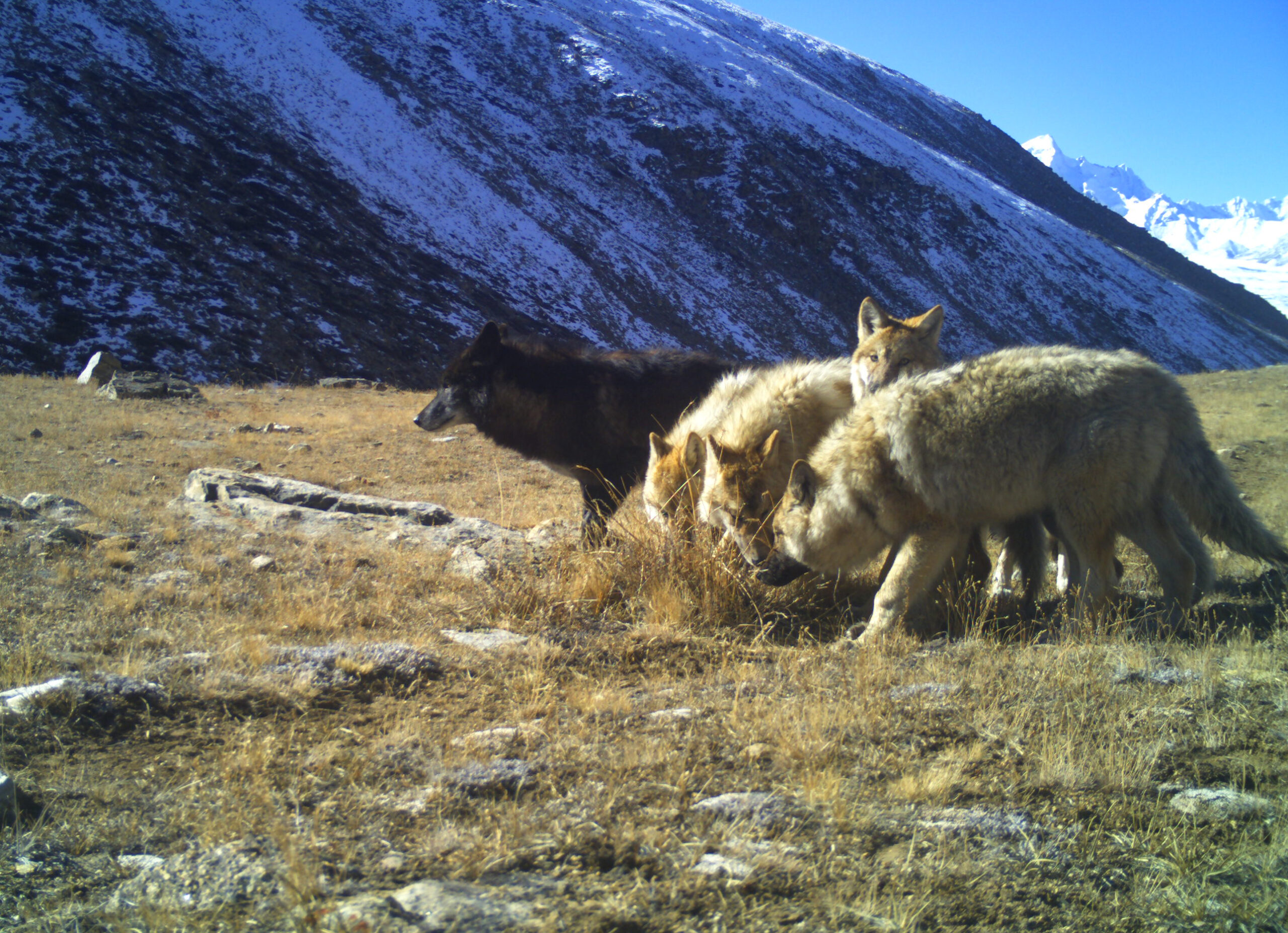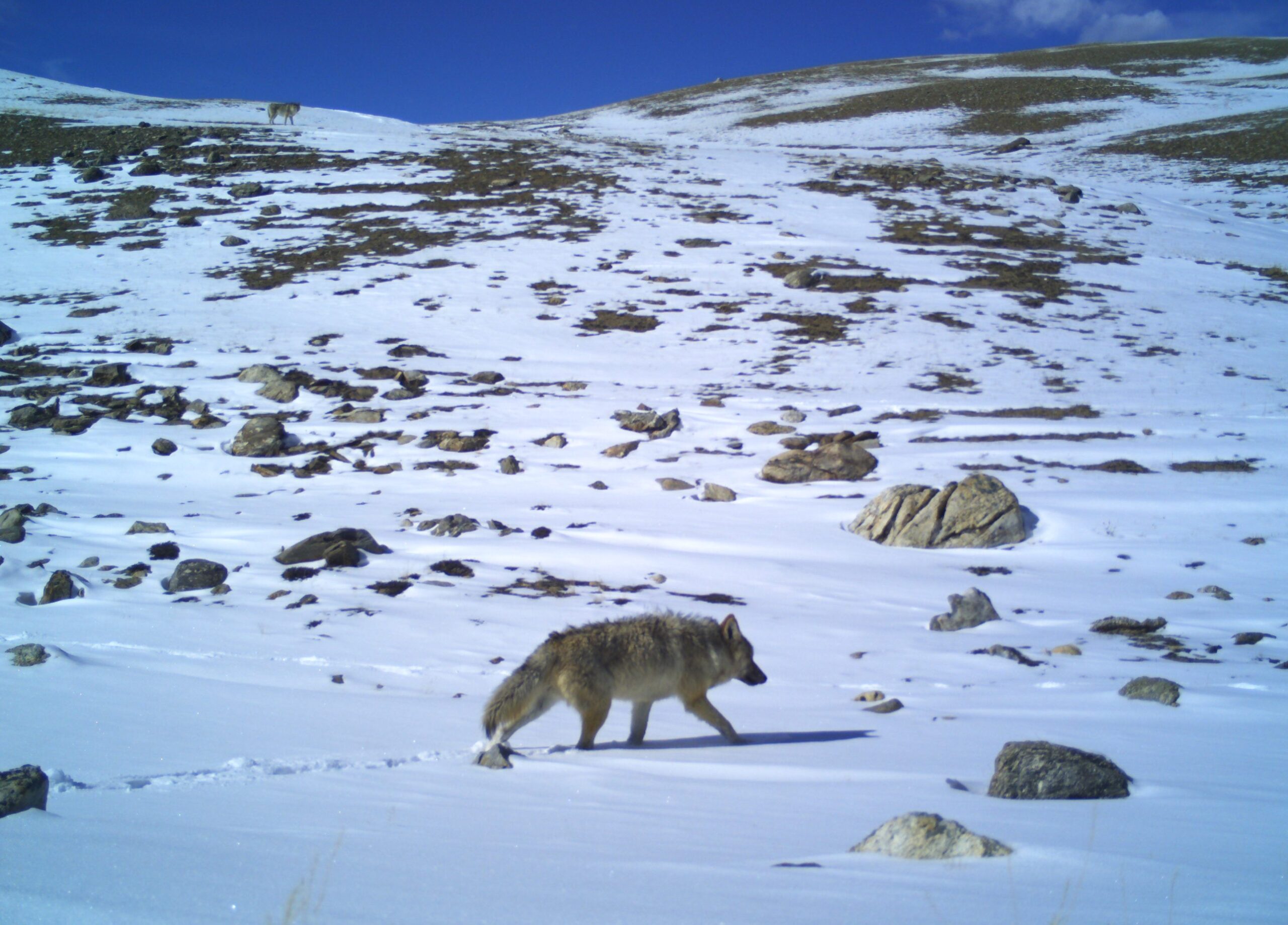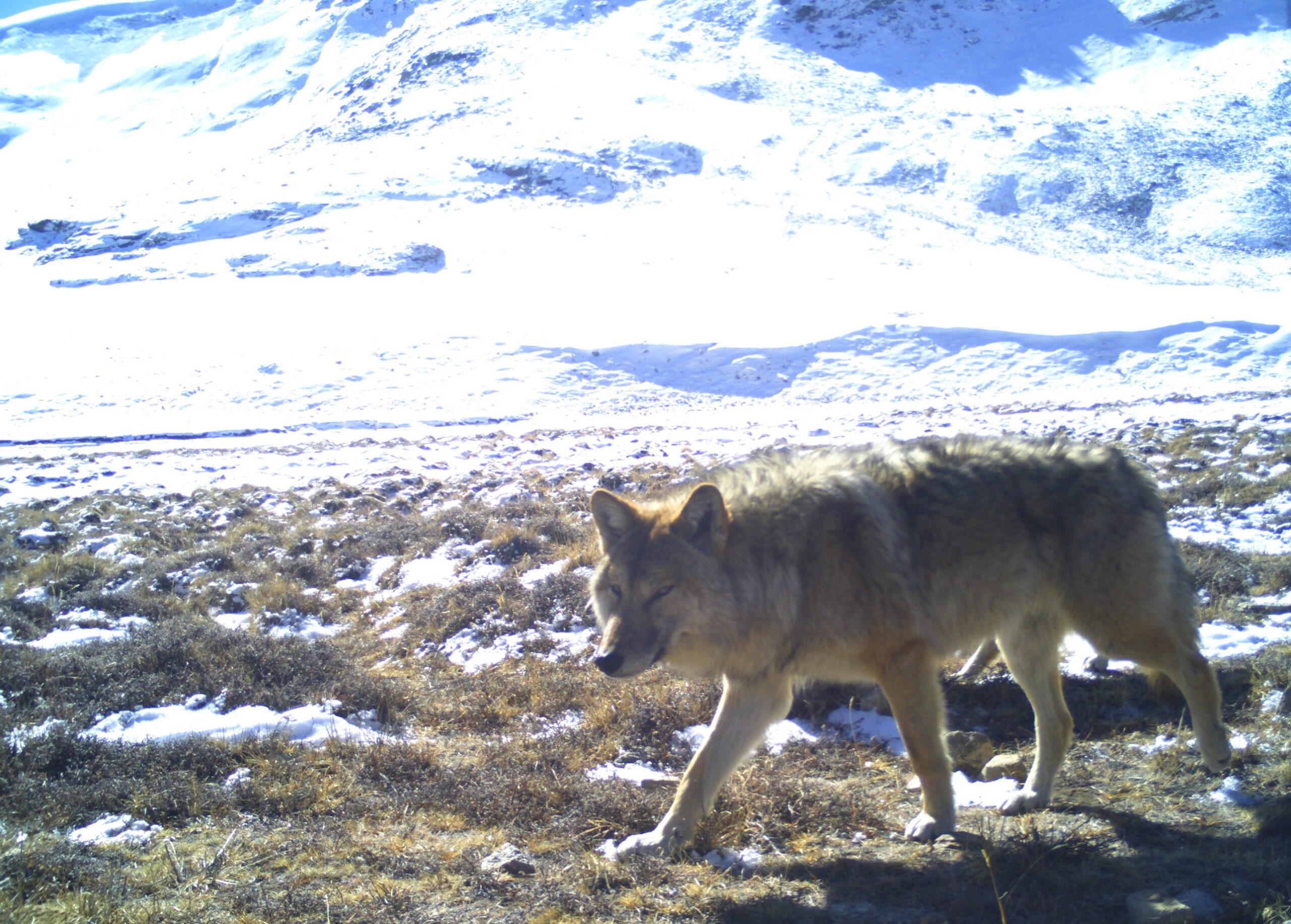The Himalayan Wolves Project, led by Geraldine Werhahn and Naresh Kusi combines interdisciplinary research from genetics to ecology and social surveys with the aim to understand and protect the Himalayan wolf, coexisting wildlife, and its habitat.
CONSERVATION CONTEXT
The Himalayan wolf (Canis lupus chanco) inhabits the high-altitude ecosystems of the Himalayas and the Tibetan Plateau. Phylogenetically, it represents one of the most ancient lineages within the Canis lupus complex. Despite its evolutionary significance, this wolf has remained largely understudied until recent years, when emerging genetic evidence began to clearly differentiate it from the Holarctic grey wolf populations of Europe and North America.
The Himalayan Wolves Project seeks to address key knowledge gaps surrounding this lineage. Central research questions include estimating the current population size in the wild, mapping its distribution range, and identifying the ecological and evolutionary factors that maintain these populations in some of the world’s most extreme habitats. The project integrates landscape-scale ecological data and molecular analyses to elucidate both the distribution patterns and the phylogenetic position of the Himalayan wolf within the broader canid clade. Understanding its phylogeny is critical for formal taxonomic classification—a cornerstone for effective conservation planning. Project findings provide strong support for at least subspecies status (Canis lupus chanco), and possibly species-level recognition, and were instrumental in the first IUCN Red List assessment for this taxon.



APPROACH
The project’s investigations into the trophic ecology of the Himalayan wolf aim to clarify its functional role in high-altitude ecosystems. By identifying key wild prey species and quantifying livestock depredation, the researchers are better able to assess the ecological requirements of viable wolf populations. Additionally, the project examines interspecific interactions with sympatric carnivores, including red foxes (Vulpes vulpes) and snow leopards (Panthera uncia), to understand interactions within these predator communities.
The integration of genetic, ecological, and socio-cultural data forms a cornerstone of the project’s applied conservation strategy. Human-wildlife conflict, particularly in the context of livestock depredation, remains a major threat. Through structured interviews and community engagement, the project investigates local perceptions of the wolf, including its role in traditional medicine, folklore, and illegal wildlife trade. This participatory approach enables the development of context-specific mitigation strategies in collaboration with indigenous and local communities.
The Himalayan Wolves Project collaborates closely with regional scientists and traditional custodians of the landscape, fostering local research capacity, raising conservation awareness, and laying the groundwork for future ecological and evolutionary research on one of the most enigmatic and understudied wolf lineages on the planet.
PROJECT MEMBERS
This project is led by Geraldine Werhahn and Naresh Kusi. Associated member, Sabita Gurung, Diploma alumni.
RELEVANT NEWS
25th April 2019: Mongabay – ‘Recognise Himalayan wolf as a distinct species: study’
1st February 2019: Smithsonian – ‘Should the Himalayan Wolf Be Classified as a New Species?’